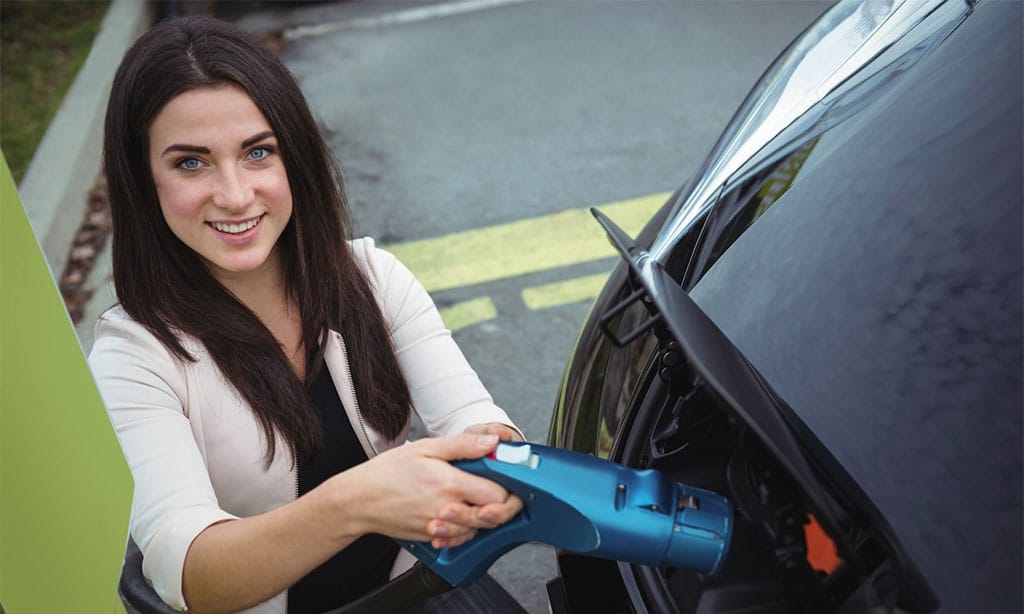As the world shifts towards cleaner and more sustainable transportation, electric vehicles (EVs) are gaining traction like never before.
Yet, despite their growing popularity, there are numerous misconceptions about EV ownership that often discourage potential buyers. From concerns about range limitations to assumptions about high maintenance costs, these myths can cloud the truth about EVs.
In this article, we’ll debunk 10 of the most common myths about electric vehicle ownership to help you make an informed decision.
1. Myth: EVs Don’t Have Enough Range for Long Trips
Fact: EV Range Has Improved Significantly
One of the most persistent myths about electric vehicles is that they don’t have enough range for long-distance travel. While early EVs had limited range, today’s models have made significant strides in this area. Most modern electric vehicles can travel 200 to 300 miles on a single charge, with premium models, like the Tesla Model S, offering ranges of over 400 miles.
Charging Infrastructure Is Expanding
With an expanding network of public charging stations, drivers can charge their vehicles at rest stops, shopping centers, and workplaces. Fast-charging stations can replenish an EV’s battery to 80% within 20-30 minutes, making long road trips feasible for EV owners.
2. Myth: EVs Are More Expensive Than Gasoline Vehicles
Fact: Lower Operating Costs Offset the Initial Investment
While the upfront cost of an EV may be higher than a comparable gasoline car, the overall ownership costs are generally lower. EVs have fewer moving parts, which means fewer repairs and lower maintenance costs over time. Additionally, many countries offer tax credits, rebates, and incentives to reduce the initial purchase price of an EV.
Fuel Savings Add Up
Electricity is generally cheaper than gasoline, resulting in significant fuel savings over the lifespan of the vehicle. According to studies, EV owners can save hundreds, if not thousands, of dollars on fuel alone compared to traditional gasoline-powered vehicles.
3. Myth: Charging an EV Takes Too Long
Fact: Charging Options Offer Flexibility
It’s true that charging an electric vehicle takes longer than filling up a gas tank, but there are several charging options that can meet different needs. For daily use, most EV owners charge their vehicles overnight at home, waking up to a full battery each morning. This overnight charging makes it easy to integrate charging into one’s routine without significant downtime.
Public Fast Chargers Minimize Wait Times
For long-distance travel, fast charging stations are becoming more common. Fast chargers can provide an 80% charge in around 20-30 minutes, which aligns well with a typical rest stop during a road trip. The growing number of fast chargers across the country also means EV drivers have more flexibility in planning their trips.
4. Myth: EV Batteries Don’t Last Long and Are Expensive to Replace
Fact: EV Batteries Are Designed for Longevity
The idea that EV batteries degrade quickly is outdated. Modern EV batteries are designed to last for many years, with most manufacturers offering warranties that cover battery life for at least 8 years or up to 100,000 miles. Battery management systems in EVs also help optimize battery life, reducing the impact of repeated charging cycles.
Battery Costs Are Decreasing
While it’s true that EV batteries can be expensive to replace, the costs have been dropping steadily over the years due to advancements in battery technology. Additionally, with extended warranties and government incentives, EV owners are better protected against the cost of battery replacement.
5. Myth: EVs Aren’t Environmentally Friendly Due to Battery Production
Fact: EVs Have a Smaller Carbon Footprint Than Gasoline Cars
Another common myth is that EVs aren’t truly “green” because of the environmental impact of battery production. While producing EV batteries does require energy and resources, studies show that the overall carbon footprint of EVs is significantly lower than that of gasoline cars over their lifetime. This is because EVs produce zero emissions during operation, which compensates for the initial environmental impact of battery production.
Battery Recycling and Second-Life Programs Are Emerging
The industry is also making strides in battery recycling and second-life programs. Used EV batteries can be repurposed for energy storage, and recycling programs are being developed to recover valuable materials. These advancements further reduce the environmental impact of EV batteries.
6. Myth: EVs Aren’t as Powerful or Fun to Drive as Gasoline Cars
Fact: EVs Offer Instant Torque and Smooth Acceleration
Electric vehicles deliver power differently than gasoline cars, providing instant torque that allows for quick acceleration. Unlike internal combustion engines, which need to build up power, electric motors deliver maximum torque immediately. This results in a smooth, responsive driving experience, which many drivers find enjoyable and thrilling.
High-Performance Models Compete with Sports Cars
Today’s EV market includes high-performance models, like the Tesla Model S Plaid and Porsche Taycan, that rival traditional sports cars in terms of speed and handling. These vehicles showcase the power potential of electric motors and dispel the myth that EVs can’t offer an exciting driving experience.
7. Myth: There Aren’t Enough Charging Stations for EVs
Fact: Charging Infrastructure Is Expanding Rapidly
The concern about charging station availability is another common misconception. The number of public charging stations is increasing quickly, with government and private investments supporting expansion. Charging networks like Tesla Supercharger, ChargePoint, and Electrify America are adding stations in urban areas, suburban neighborhoods, and along highways.
Home Charging Provides Daily Convenience
Most EV owners do the majority of their charging at home, which covers their day-to-day driving needs. For those without a home charger, workplace charging options are becoming more common, further supporting EV use in everyday life. With this multi-level charging infrastructure, the fear of running out of power is becoming less of a concern.
8. Myth: EVs Are Unsafe Compared to Traditional Vehicles
Fact: EVs Meet Strict Safety Standards
Electric vehicles are subject to the same rigorous safety testing as traditional gasoline cars. In fact, due to the design of EVs, they often fare better in crash tests. The battery packs in most EVs are placed low in the vehicle’s chassis, which lowers the center of gravity and makes EVs less prone to rollover accidents.
Advanced Safety Features Are Standard
Most modern EVs come equipped with advanced safety features, such as autonomous emergency braking, lane-keeping assist, and collision warning systems. These features make EVs highly competitive in terms of safety and offer peace of mind to drivers and passengers alike.
9. Myth: EVs Are Only Practical for City Driving
Fact: EVs Perform Well in a Variety of Driving Conditions
While it’s true that urban environments suit EVs well due to the availability of charging stations and the benefits of regenerative braking, EVs are equally capable of handling highway driving and rural routes. In fact, highway charging networks are growing, making EVs a practical option for both city and long-distance driving.
EV Range Is Ideal for Commuting and Beyond
With modern EV ranges averaging around 200-300 miles per charge, electric vehicles can meet the needs of most drivers, whether they’re commuting, running errands, or taking road trips. With continued improvements in battery technology, EVs are becoming even more versatile for various driving scenarios.
10. Myth: EVs Are Just a Passing Trend
Fact: EVs Are the Future of Transportation
The idea that electric vehicles are a fad or trend is no longer valid. Governments around the world are implementing policies to phase out gasoline and diesel cars in favor of electric options. Major automakers are committing to electric fleets, and consumer demand is steadily increasing. EVs are here to stay, with advancements in technology continuing to make them more accessible, efficient, and environmentally friendly.
The Growing Support for EV Adoption
With increased public awareness, infrastructure development, and investment in EV technology, electric vehicles are expected to become the standard in the automotive industry. EVs are not only a practical solution for today’s transportation needs, but they also represent a sustainable and forward-looking choice for future mobility.
Conclusion
As electric vehicles become more mainstream, it’s essential to separate fact from fiction. While myths about range limitations, costs, and safety continue to circulate, the reality is that EV technology has made significant strides in recent years.
Modern EVs offer impressive range, lower maintenance costs, and a high level of safety, making them an increasingly viable choice for drivers.
By debunking these 10 myths, we hope to provide a clearer understanding of what EV ownership truly entails. Electric vehicles offer numerous benefits and continue to improve, representing not only the future of the automotive industry but also a step toward a more sustainable world.
As the adoption of EVs grows, dispelling these misconceptions will be crucial in helping more people make the transition to cleaner, greener transportation.






































